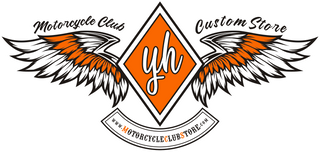
As members of a motorcycle club, we understand the thrill and freedom that comes with riding on the open road. However, it's crucial to prioritize safety, and one essential piece of safety equipment is a properly fitting motorcycle helmet. In this article, we will explore why a tight-fitting helmet is vital for motorcycle club members and provide a comprehensive guide on how to achieve the perfect fit without sacrificing comfort.
Why is a tight helmet important? Wearing a motorcycle helmet is not only a legal requirement but also a matter of personal safety. A snugly fitting helmet provides several crucial benefits for motorcycle club members:
-
Protection against head injuries: A properly fitting helmet significantly reduces the risk of serious head injuries in case of an accident. It acts as a protective shell, absorbing impact and shielding your head from potential harm.
-
Enhanced control and visibility: A loose helmet can shift during a ride, obstructing your vision and making it difficult to maintain control of your motorcycle. By ensuring a tight fit, you can ride with confidence, fully aware of your surroundings.
-
Maximum protection: A tight helmet stays securely in place, offering continuous protection throughout your ride. It prevents the helmet from flying off during a crash, which could render it useless and leave your head vulnerable.
-
Comfortable riding experience: A snug-fitting helmet reduces wind noise and buffeting, providing a more comfortable and enjoyable ride. It minimizes distractions and allows you to focus on the road ahead.
How to tell if your helmet is too tight or loose: Determining the right fit for your helmet is crucial to ensure both safety and comfort. Here are some signs that indicate your helmet may be too tight or too loose:
Signs of a tight helmet:
- Discomfort or pressure points around the forehead, temples, or cheeks
- Feeling of being squeezed or compressed
- Difficulty in putting on or taking off the helmet
- Red marks on the skin after removing the helmet
- Headaches after wearing the helmet for an extended period
Signs of a loose helmet:
- Easy movement of the helmet back and forth or side to side on your head
- Gap between your forehead and the helmet's padding
- Wobbling or excessive movement of the helmet during the ride
- Excessive wind noise and buffeting
- Helmet sliding down over your eyes, obstructing your vision
How to adjust your helmet for a perfect fit: Achieving a snug and secure fit for your helmet is essential. Follow these steps to ensure your helmet fits properly:
-
Measure your head: Use a tape measure to determine your head size accurately. Refer to manufacturer guidelines for helmet sizing.
-
Try on different helmets: Everyone has a unique head shape, so it's important to try on various helmets to find one that fits your head shape comfortably.
-
Adjust the chin strap: Ensure the chin strap is snug but not overly tight, centered under your chin.
-
Position the helmet correctly: The helmet should sit level on your head, with the front just above your eyebrows.
-
Use sizing pads: Most helmets come with sizing pads that can be added or removed to achieve the perfect fit. Adjust the pads until the helmet feels snug without causing discomfort.
-
Test the fit: Shake your head from side to side and up and down to check if the helmet stays in place without excessive movement.
-
Check visibility and mobility: Ensure that the helmet's visor does not obstruct your vision and that you can move your head freely.
The dangers of an ill-fitting helmet: Wearing an ill-fitting helmet poses potential dangers that can compromise your safety and overall riding experience. Here are some risks of wearing a poorly fitting helmet:
-
Reduced protection: A loose helmet may shift or come off entirely during an accident, leaving your head vulnerable to injuries.
-
Discomfort and distractions: A helmet that's too tight can cause discomfort, pressure points, and headaches, making it difficult to concentrate on the road.
-
Impaired vision: An improperly fitting helmet can obstruct your vision, reducing your ability to identify and react to potential hazards.
-
Noise and discomfort: A loose helmet that moves excessively can create excessive wind noise and buffeting, leading to distractions and an uncomfortable ride.
As motorcycle club members, it's vital to prioritize safety on every ride. A properly fitting helmet is a crucial aspect of rider safety, providing protection and comfort while on the road. By following the steps outlined in this guide and regularly checking the fit of your helmet, you can ensure maximum protection and enjoy the freedom of riding with peace of mind. Remember, a snug and secure helmet is not just a necessity but also an essential accessory for every responsible motorcycle club member. Stay safe and ride on!
We are a brand that specializes in providing one-stop-shop peripheral product design and customization services for global motorcycle clubs. Our website address is www.motorclubshop.com.
We provide unique peripheral product design and customization services for motorcycle clubs around the world, helping clubs create unique images and cultures. Our products include Patches, Biker Pins, Rings, Necklaces, Belt Buckles, Club Vests, T-shirts, Hoodies, Caps, Face Covers, Arm Sleeves, Bandanas, Flags, Helmets, Mugs, and more. Our services make motorcycle club members more proud and united.
